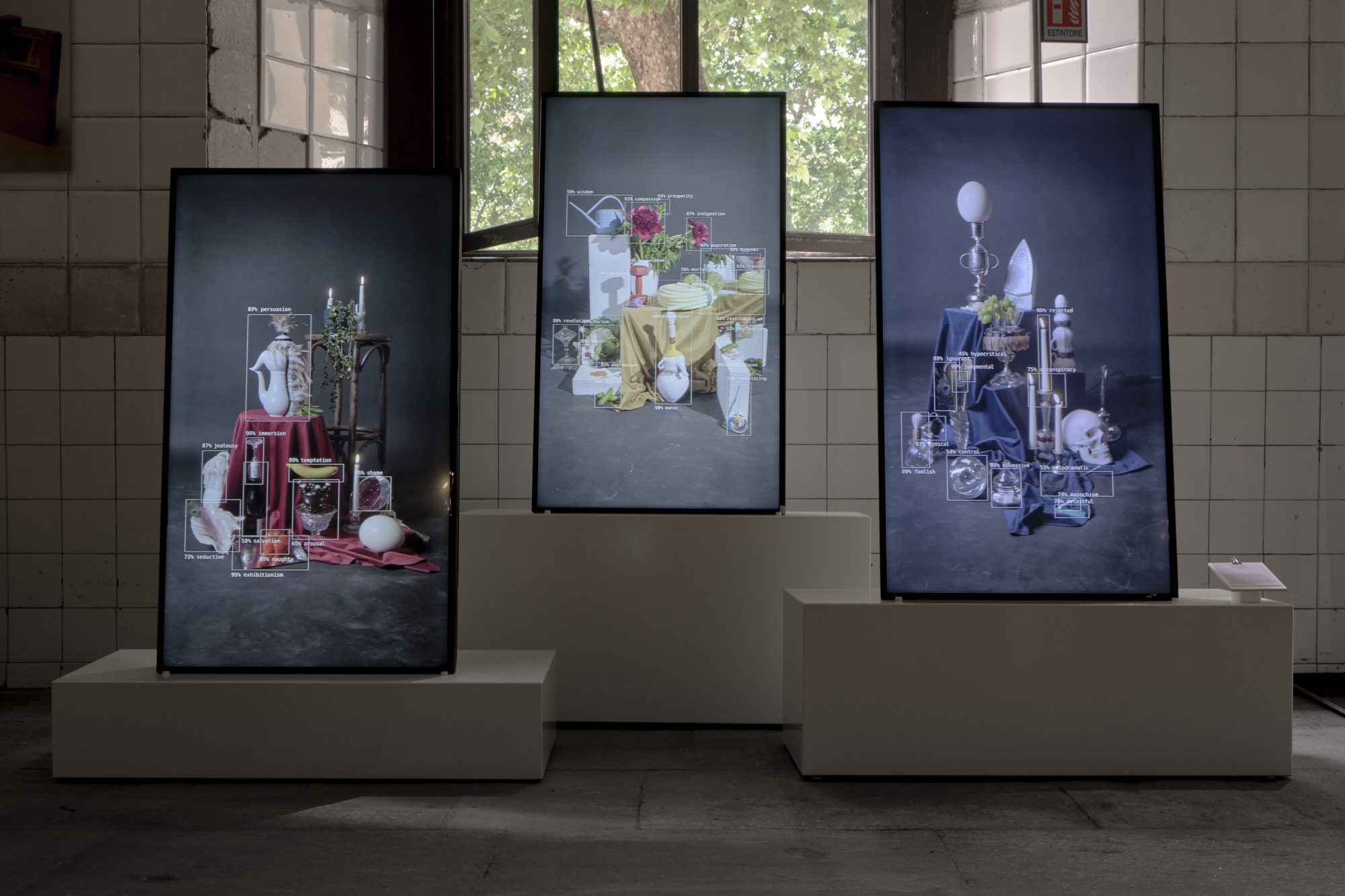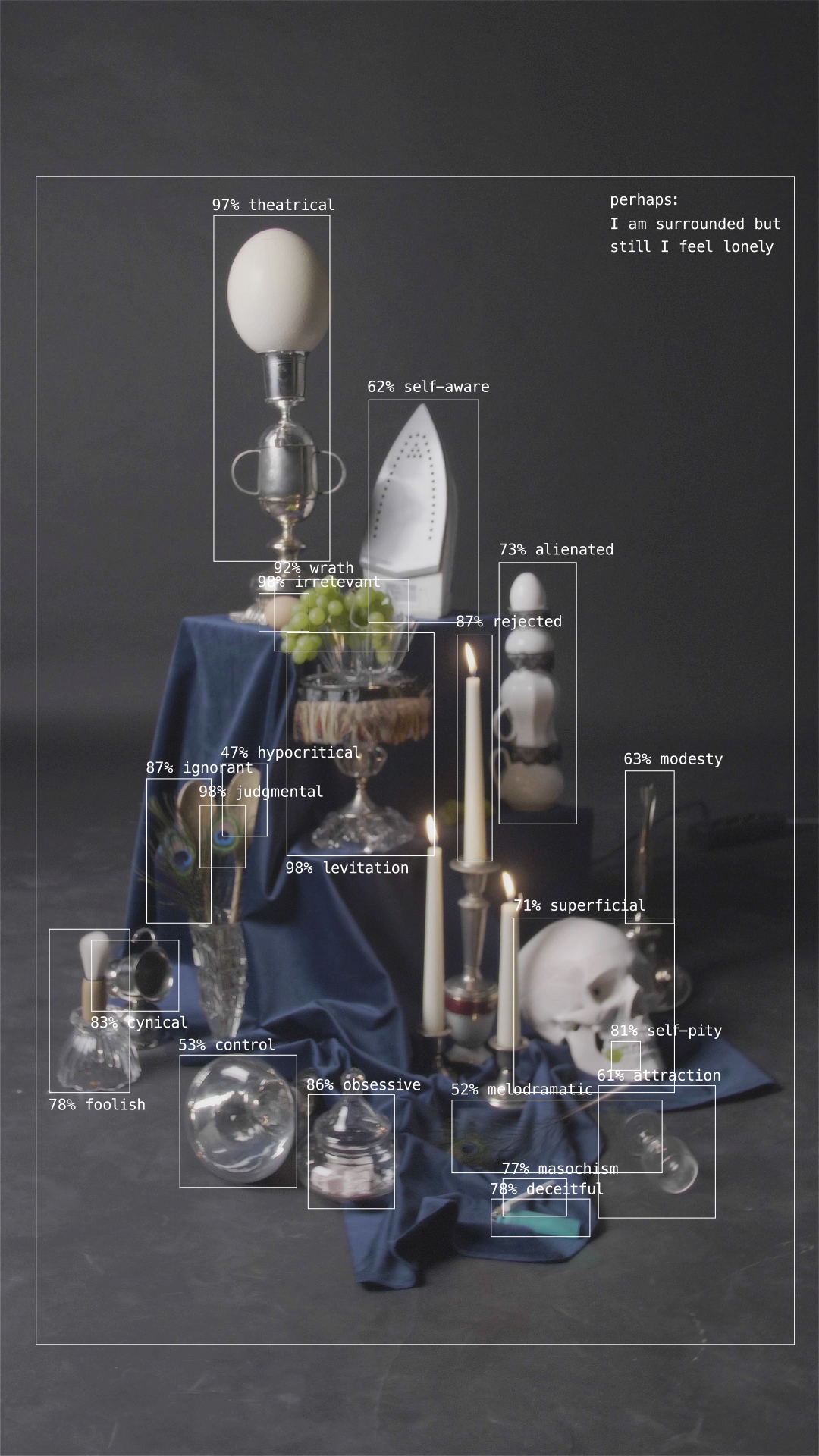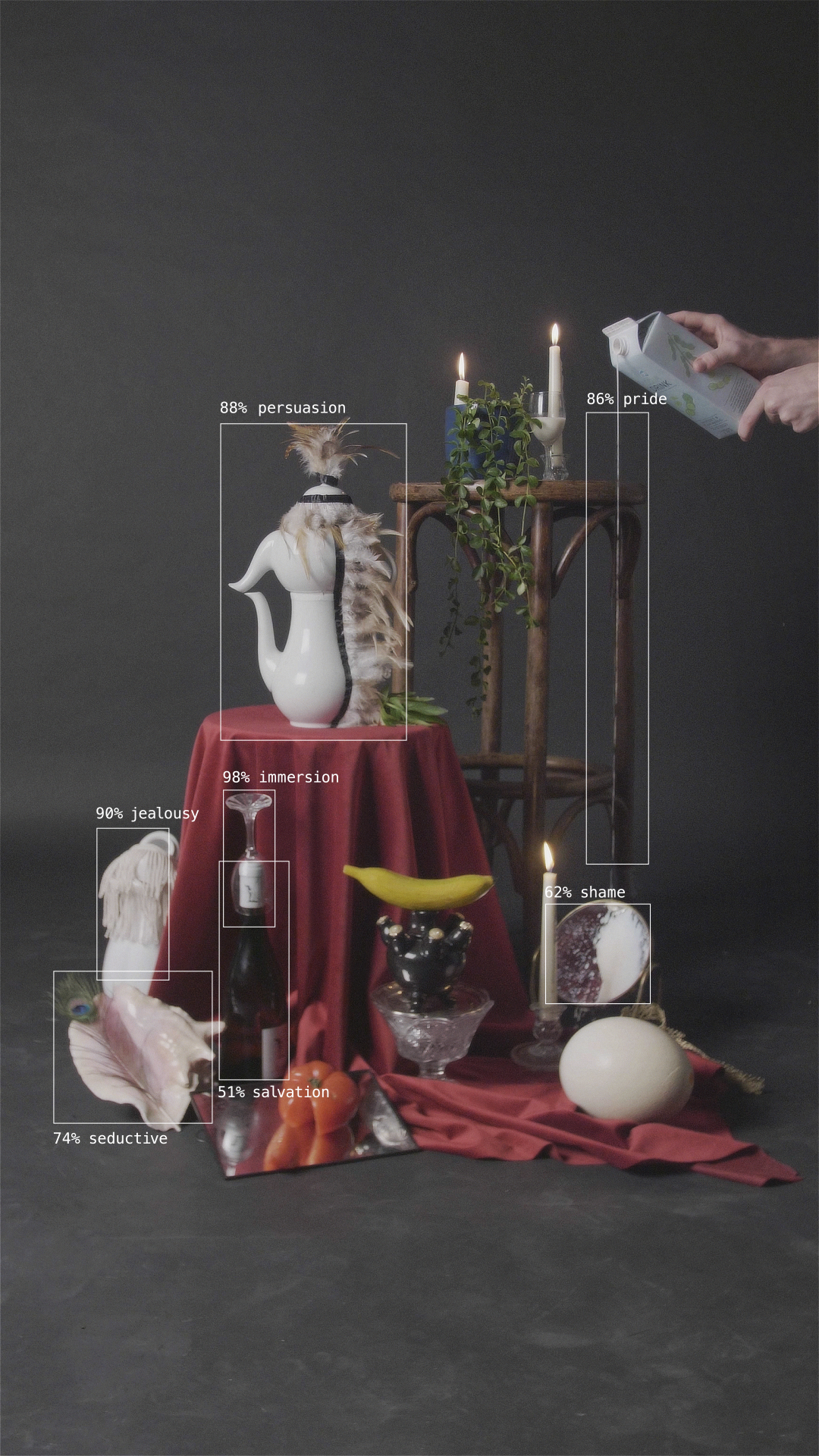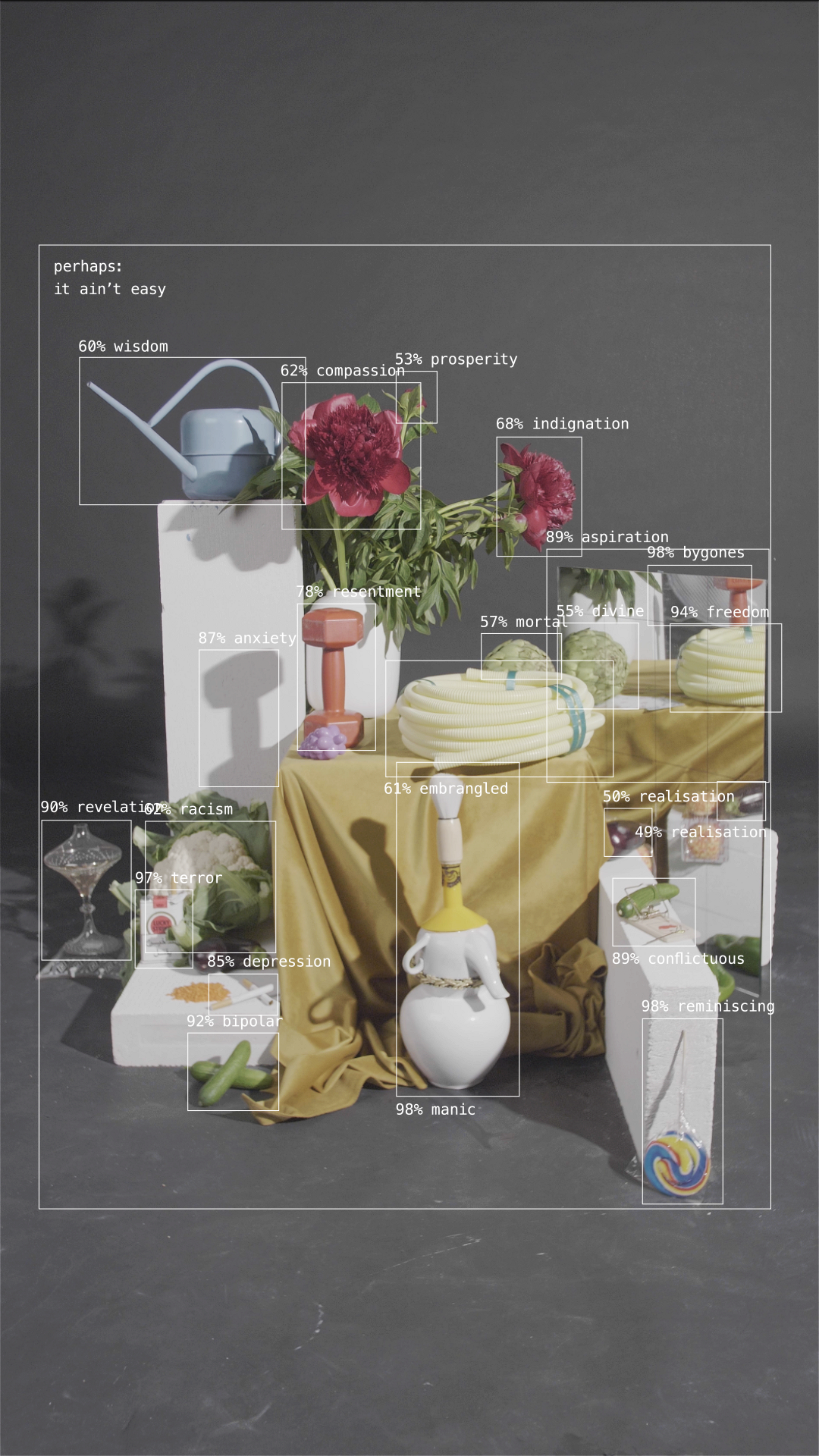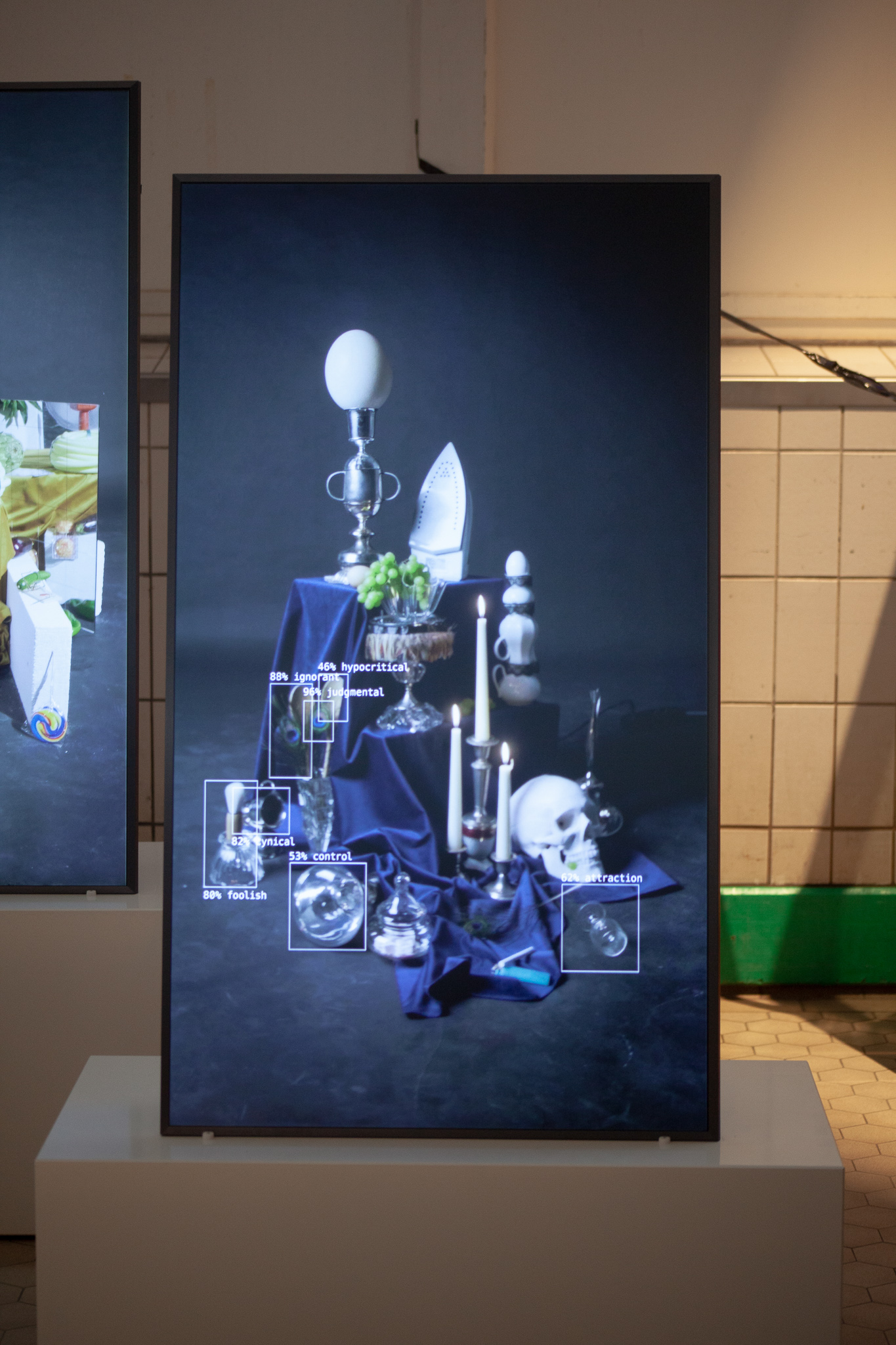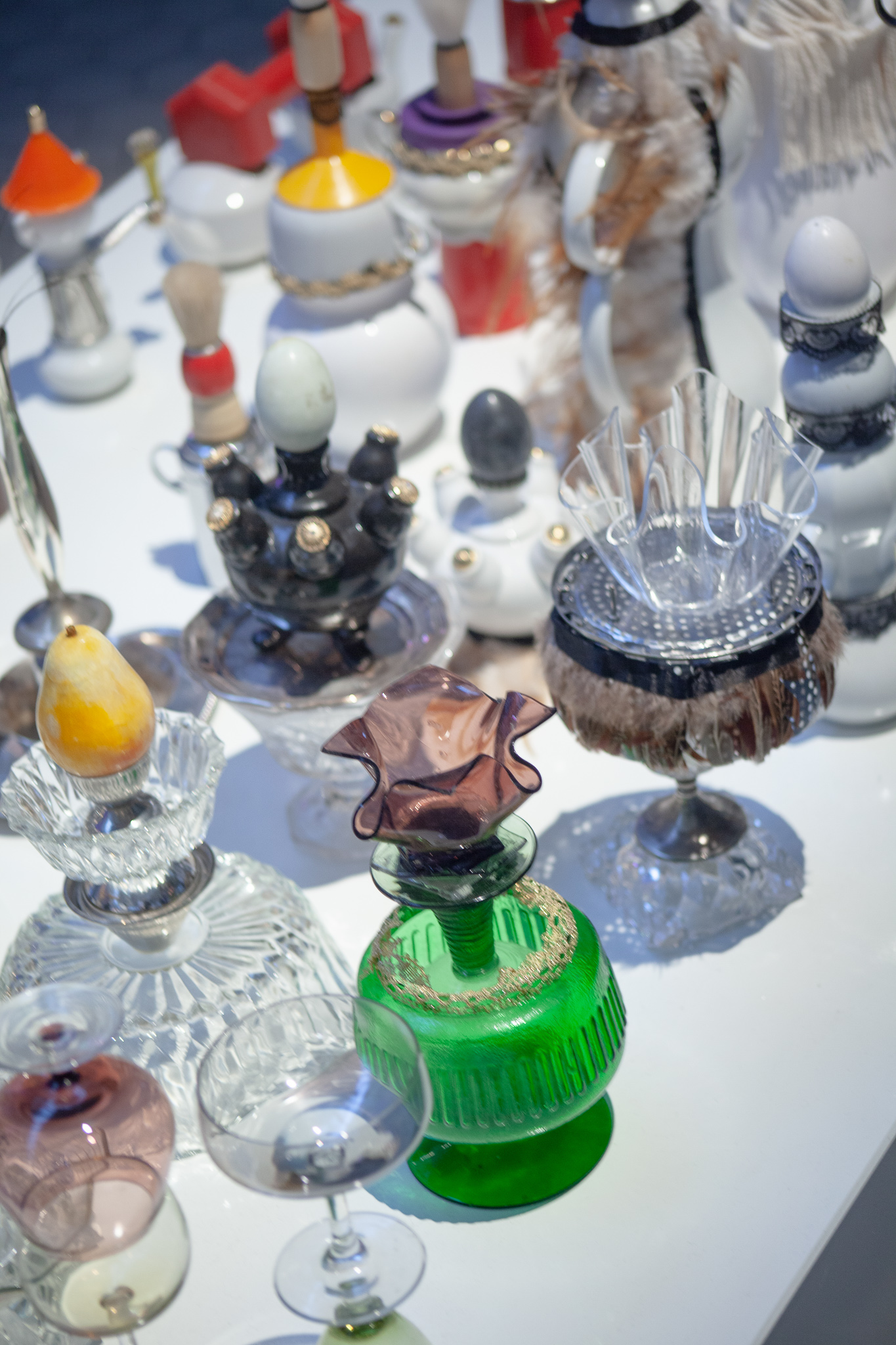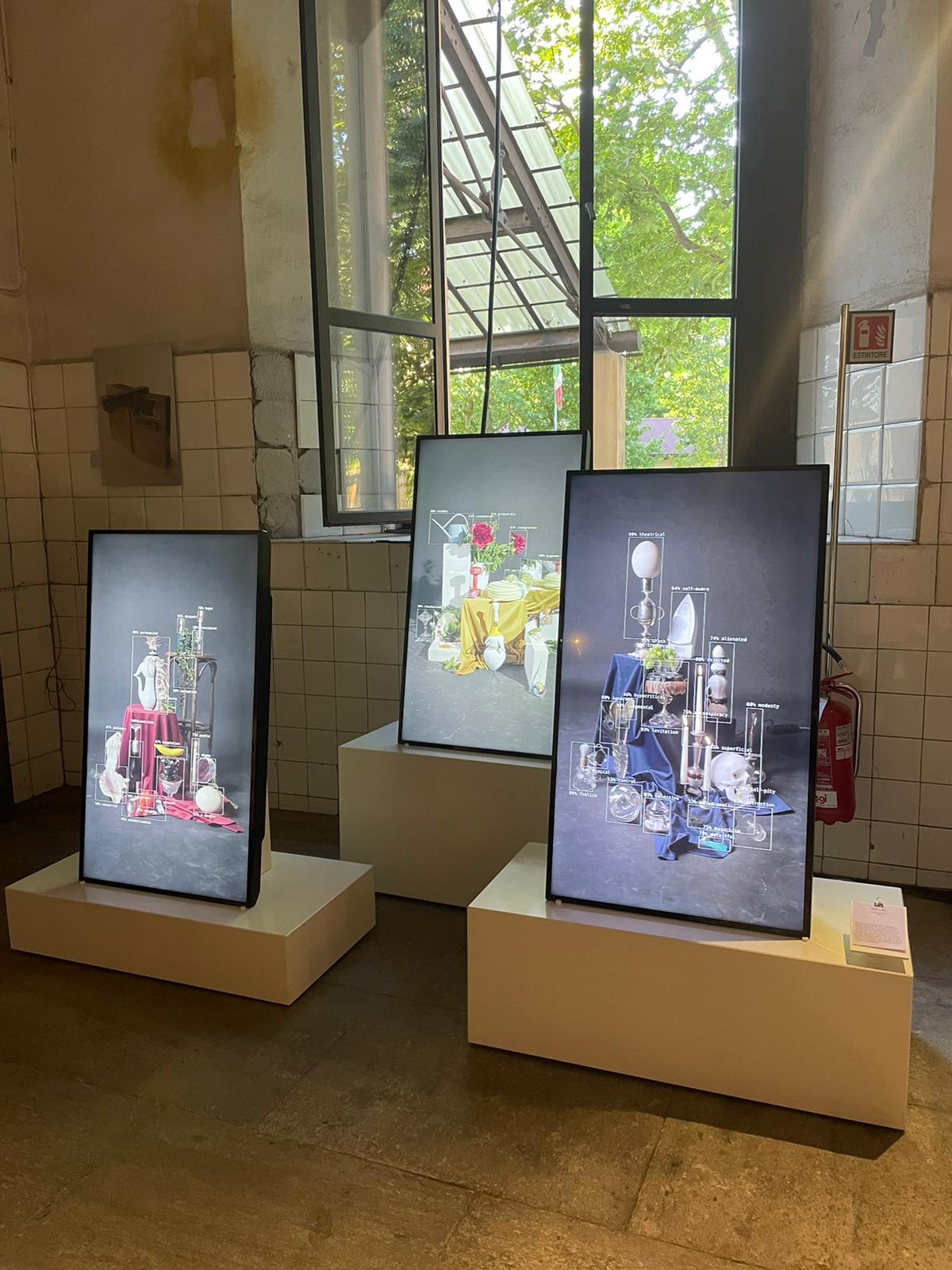Still Life
“Still Life” is a research project exploring machine learning algorithms becoming explicitly subjective. In this project, it was questioned how something subjective as emotions and the human gaze could be placed on an objective, mathematical scale, as machine learning algorithms appear to be. How can you automate an emotional experience of the world? How can you capture this in a dataset? What can image recognition algorithms look like, if they are trained on merely subjective, emotional categories?
The research became a thought experiment in which the programming and the use of the learning machine was reconsidered. This resulted in the installation “Still Life”, in which a speculative process of an ‘emotional algorithm at work’ was depicted. The installation invites the spectator to experience an object recognition algorithm, and to become aware of the emotional meaning and symbolism captured in the constellations of the objects around us, and what role this learning algorithm could play.
“Still Life” is a research project exploring machine learning algorithms becoming explicitly subjective. In this project, it was questioned how something subjective as emotions and the human gaze could be placed on an objective, mathematical scale, as machine learning algorithms appear to be. How can you automate an emotional experience of the world? How can you capture this in a dataset? What can image recognition algorithms look like, if they are trained on merely subjective, emotional categories?
The research became a thought experiment in which the programming and the use of the learning machine was reconsidered. This resulted in the installation “Still Life”, in which a speculative process of an ‘emotional algorithm at work’ was depicted. The installation invites the spectator to experience an object recognition algorithm, and to become aware of the emotional meaning and symbolism captured in the constellations of the objects around us, and what role this learning algorithm could play.
Installation, grad project, 2019
![]()
![]()
![]()
![]()
![]()
![]()
